|
Treasure House of Design
by Bob
Brooke
Where will you find a chair used by Abraham Lincoln and a
Rolls-Royce once owned by the Beatles? The answer is the Cooper Hewitt
Museum in New York City. The car, donated by John Lennon and Yoko Ono in
1978, was sent to Sotheby’s in the summer of 1985 where it sold for
$2,090,000. Obviously, the museum needed the money more than the fame
the car would have brought.
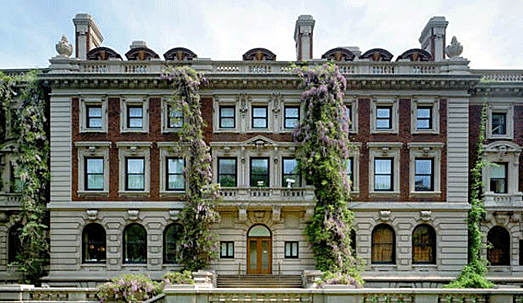
And so it goes with many of the museums founded during the “Golden Age,”
the Belle Epoque. Wealthy upper class New Yorkers donated an assortment
of objects. But it wasn’t until later that the original collection
received a good analysis and the museum got its present-day focus.
The Cooper Hewitt, Smithsonian Design Museum is the nation’s premier
museum exclusively devoted to design in all its forms. When someone
mentions the word “design,” thoughts of architectural forms, industrial
art objects, and graphic printing are tops on the list. But design is
much, much more, and the Cooper Hewitt showcases it beautifully,
especially after its recent $91 million renovation.
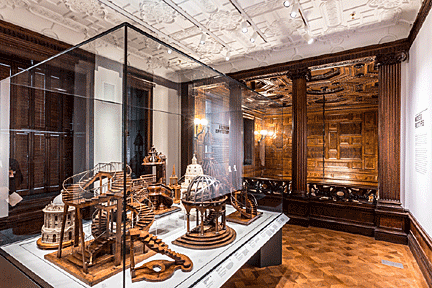 Located
in the Upper East Side's Museum Mile in Manhattan, it’s one of 19
museums that fall under the wing of the Smithsonian Institution and is
one of three Smithsonian facilities located in New York City, the other
two being the George Gustav Heye Center in Bowling Green and the
Archives of American Art New York Research Center in the Flatiron
District. It’s the only museum in the United States devoted to
historical and contemporary design. Its collections and exhibitions
cover nearly 240 years of design aesthetic and creativity. Located
in the Upper East Side's Museum Mile in Manhattan, it’s one of 19
museums that fall under the wing of the Smithsonian Institution and is
one of three Smithsonian facilities located in New York City, the other
two being the George Gustav Heye Center in Bowling Green and the
Archives of American Art New York Research Center in the Flatiron
District. It’s the only museum in the United States devoted to
historical and contemporary design. Its collections and exhibitions
cover nearly 240 years of design aesthetic and creativity.
Founded in 1896, Cooper Hewitt Museum was originally given the name of
Cooper Union Museum for the Arts of Decoration and fell under the wing
of the Cooper Union for the Advancement of Science and Art. In 1895, the
granddaughters of Peter Cooper, Sarah Cooper Hewitt, Eleanor Garnier
Hewitt and Amy Hewitt Green, asked the Cooper Union for a space to
create a Museum for the Arts of Decoration. The new museum took its
inspiration from the Musée des Arts Décoratifs, Paris. It would serve as
a place for Cooper Union students and professional designers to study
decorative arts collections. When it opened on the fourth floor of the
Foundation Building in 1897, it was only open three days a week and was
free.
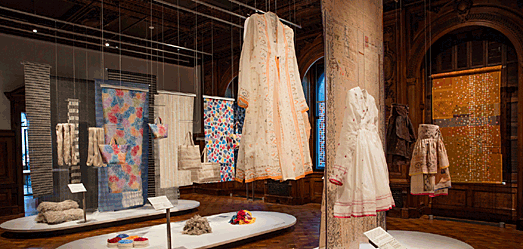
Eventually the museum and the art school distanced themselves from one
another, resulting in the museum’s closing on July 3, 1963. Public
outcry was strong against the closing. Henry Francis Du Pont formed the
Committee to Save the Cooper Union Museum. Negotiations began between
the Cooper Union and the Smithsonian Institution. On October 9, 1967,
the Trustees of the Cooper Union signed an agreement turning over the
collection and library of the museum to the Smithsonian. On July 1,
1968, it was officially renamed the Cooper-Hewitt Museum of Design. The
following year, 1969, its name changed once again to the Cooper-Hewitt
Museum of Decorative Arts and Design.
The museum moved to its home at the Andrew Carnegie Mansion in 1970. The
Mansion was renovated and the museum opened to the public on October 7,
1976 with the exhibition "MAN transFORMs."
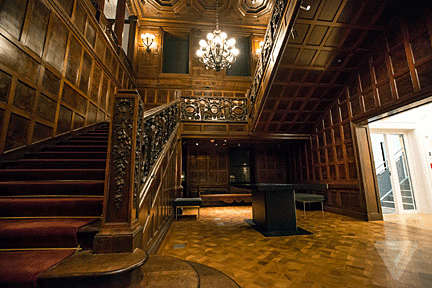 The
Georgian style mansion, under construction from 1899 to 1902, has 64
rooms. The home served as not only the home for Andrew Carnegie, his
wife, and daughter, but also as his office for his philanthropic work
after his retirement. The architectural firm of Babb, Cook & Willard
designed the mansion as the first private residence in the country to
have a structural steel frame, as well as the first home in New York to
have an Otis elevator. The home also had central heating and an early
form of air-conditioning. The conservatory, made of Tiffany glass,
underwent renovation in 1975. In 1995, the museum closed for a year for
a $20 million renovation to connect the three buildings on the property,
improve accessibility, and build a design study center. The
Georgian style mansion, under construction from 1899 to 1902, has 64
rooms. The home served as not only the home for Andrew Carnegie, his
wife, and daughter, but also as his office for his philanthropic work
after his retirement. The architectural firm of Babb, Cook & Willard
designed the mansion as the first private residence in the country to
have a structural steel frame, as well as the first home in New York to
have an Otis elevator. The home also had central heating and an early
form of air-conditioning. The conservatory, made of Tiffany glass,
underwent renovation in 1975. In 1995, the museum closed for a year for
a $20 million renovation to connect the three buildings on the property,
improve accessibility, and build a design study center.
In 1994, the museum's name changed again to Cooper–Hewitt, National
Design Museum. And on June 17, 2014, the museum's name changed once
again to Cooper Hewitt, Smithsonian Design Museum.
The mansion closed to the public in July 2011 to a second period of
renovations costing $91 million. On December 12, 2014, the Cooper Hewitt
reopened to the public. Renovations included an "Immersion Room", an
interactive space that provides visitors digital access to the museums
collection of wallpaper. The main exhibition space had also been
expanded.
Collections
The Cooper Hewitt collections consist of decorative and design objects.
It’s original collection focused on architecture, sculpture, painted
architecture, decorative arts, woodwork, metalwork, pottery, costume,
musical instruments and furniture. Upon its opening, Abram S. Hewitt's
wife, Sarah Amelia Hewitt, donated a lace collection, George Hearn
donated two fountains worth $1,000, and Lloyd Bryce's wife donated art
and objects from the Palace of Fontainebleau.
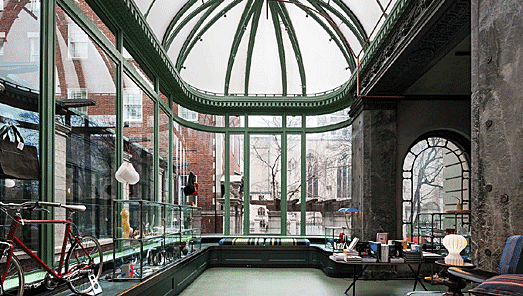
The museum has a wide variety of objects in its collection, ranging from
matchbooks, to shopping bags, porcelain from the Soviet Union, and the
papers of graphic designer Tibor Kalman.
Exhibitions Through the Years
Exhibitions at the Cooper Hewitt explore the history and culture of
design and decorative arts. A 1968 exhibition called "Please Be Seated,"
focused on contemporary chairs.
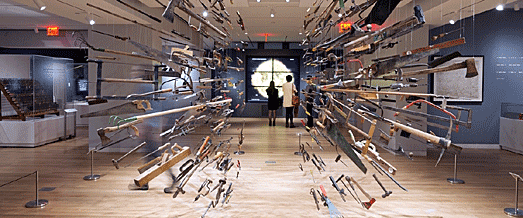
In 1977, approximately a year after the museum reopened, "Palaces for
the People," explored a century of resort and motel architecture in the
United States. In 1979, the museum hosted hundreds of objects on loan
from various other Smithsonian museums for an exhibit called
"Smithsonian." The museum, in 1980, showcased the history and culture of
the oceanliner in the exhibition "The Oceanliner: Speed, Style, Symbol."
Later that year the "Hair" exhibit featured over 350 objects about the
history of hair styles and "Electroworks" covered the history of copy
machine art. In conjunction with the National Endowment of the Arts and
the National Endowment for the Humanities the Cooper-Hewitt showcased
Scandinavian design. In 1983, The Cooper-Hewitt was the first museum in
the United States to exhibit the Amsterdam School.
The jewelry of Van Cleef & Arpels was a focus of an exhibition in 2011.
That same year artist Sonia Delaunay had a solo show at the museum. The
Cooper-Hewitt worked with the Walker Art Center, in 2012, to develop
"Graphic Design - Now In Production," which showcases graphic design
that has been created since 2000.
Other exhibitions at the museum have included Puiforcat silver,
wallpaper, the works of Alexander Girard, and universal design.
<
Back to More Antiques to View
Next Article > |
